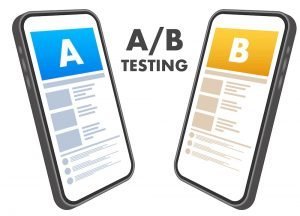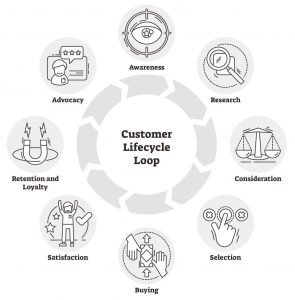What is growth marketing? – a question we often hear and in this article will try to shed light on. As the advertising space is growing immensely, revenue teams and marketers entered 2022 with significant challenges and unprecedented opportunities. The opportunity to gain a competitive edge abounds, but it’s complicated to balance execution with growth strategy across available tactics.
According to Statista, the United States collectively spent $200B on marketing every year. Experts expect that the number will grow to $322B by 2024. Therefore, to break through the noise and stand out, businesses must build a marketing strategy that’s creative, compelling, and iterative. A strategy that helps companies with customer acquisition and is a breeding ground for organic growth and word of mouth.
That’s where growth marketing comes into play. Let’s delve into discussing this powerful way of building a loyal customer base and what growth marketing entails.
What is growth marketing – a definition
The process of using marketing campaigns’ insights and data to drive growth is known as growth marketing. It takes the traditional marketing approach and adds layers, including data-driven email campaigns, value-additive articles, A/B testing, SEO optimization, and technical analysis of all aspects of the customer’s experience. To achieve sustainable and robust growth, businesses quickly implement the insights obtained from these strategies.
There’s a lot of debate surrounding what is growth marketing and how it’s different from traditional marketing. Therefore, we’ve created a list of key differences between them to clear up the differences.
Growth marketing relies on data-driven insights
Traditional marketing agencies have their strategy geniuses. They conduct interviews, research, and feed from other studies and focus groups on briefing creative teams. However, what if there’re limited research and resources? Then the traditional marketers make guesswork by examining past similar campaigns.
Most creative directors are obsessed with doing their jobs. Getting awards boost their motivation to transform more brands into global recognition and exposure. Therefore, whenever they see any opportunity to get an award, they start creating the wittiest advertisements. They use minimal data-driven insights. The campaigns get significant attention as it’s undoubtedly award-worthy, but; it brings little profit to the company. After the campaign completion, you’ll never analyze or optimize the results as they lack the tools and technologies to measure it.
On the other hand, the growth marketer’s north star is DATA. Creative solutions are important, but the top priority is results, and there isn’t any space for gut feeling or guesswork. Furthermore, they always experiment that’s trackable and measurable to determine what works efficiently. Lastly, even failures are valuable as they can spot what’s wrong.
Growth marketing drives incremental growth
Traditional marketing is your best choice if you want to get high exposure on multiple platforms like a city square, TV, and billboard. Traditional marketers’ most creative ideas are to attract prospects, and they always aim for maximum brand awareness. Also, the campaigns are long-winded. Brands relying on traditional marketing run a maximum of 2 or 3 campaigns annually.
However, the growth marketing goal can be anything and everything from product development to referral campaigns. The campaigns are short-winded, and the purpose is to determine which experiments are bringing the most conversions. Growth marketers constantly test the campaigns with minor changes to drive incremental growth. For instance, no matter if your campaign did not went viral, if customers didn’t sign up for your offering, it still provides valuable data. It means you’re not targeting the right audience, the experiment has failed, and you must optimize the campaign.
Make A/B testing your secret weapon
Primarily, the process of comparing two versions of marketing assets and measuring their performance difference is known as a/b testing. A/B testing eliminates the guesswork from marketing. If you’re considering a new marketing strategy to improve the company’s performance, set up an a/b test and observe the data. If you get the desired results, continue with the new plan. Otherwise, continue creating and experimenting with new strategies.

To conduct an a/b test, gather insights about your potential customers. Set clear goals and determine which specific metrics you need to monitor. For instance, the metrics for the sales campaign will be different from the brand awareness campaign. Next, build multiple variations and limit each round of testing to a maximum of three variations. Now, run the a/b test to gather sufficient data and insights. The perfect sample size will depend on your marketing priorities. If you target a smaller sample size, you can analyze and optimize the results quickly and at a lower cost. You’ll get more information to make larger-scale informed decisions if you target a larger sample size. After analyzing the results, make adjustments if required. Continue monitoring the marketing activities even after you’ve found a winning variant to ensure it’s still effective.
Growth marketing is a fast-paced process
In traditional marketing, the first meeting is held with the account and strategy department. This meeting helps marketers understand your brand. Then the strategy team briefs the creative team on creating a compelling campaign. After a few weeks, the creative team presents several routes with slogans, radio spots, TV commercials, and witty ideas. After so many months, you’ll have the first fancy campaign on air.
But, when it comes to growth marketing, the teams find out the business needs in the first meeting. Within a week, they have multiple experiments to execute in the following week. The campaigns will be running within a month. You’ll get the results and insights and can efficiently determine if you need to kill, pivot, or scale the campaign. Then the growth marketers sail for another set of campaigns. It’s an interactive and faster process.
Launching any digital marketing or growth marketing campaign is easier than setting up an offline marketing campaign. Besides that, growth marketing is versatile. It’s possible to make changes in the ad even when the campaign is running. You can always check the campaign’s performance and optimize it accordingly. However, traditional marketing is non-versatile; it means you can’t alter the ad when it’s published. There is no mode of immediate communication which ultimately limits the growth.
Since we can’t all win the lottery, we’ve created a list of tried and tested growth marketing strategies that can help scale your business in no time.
Never neglect the frighteningly-powerful impact of a channel mix marketing plan
A Channel mix marketing plan is a ratio in which businesses divide their resources on multiple platforms. This allows tweaking master content in particular ways that give ideal results in various channels. The aim is to maximize the engagement, reach, or other KPI (Key Performance Indicator) the business is tracking.

When you attract a customer but do not get a sale, it means the customer has established an interest. Now, you can learn more about their preferences or why they didn’t convert. You can connect with them and increase your chances of closing the deal by serving up relevant display ads. Moreover, combine different channels, such as Facebook, Instagram, YouTube, LinkedIn, etc., to achieve business objectives within a specified budget and resources. As Statista researchers found that brands allocate around 14.9% of their overall marketing budget to social media platforms.
Besides that, every channel serves a different function within the channel mix. For instance, one channel can be ideal for attracting potential leads, while the other is best suited for generating business. Therefore, ensure to build a channel mix strategy that efficiently delivers the brand messages to ideal customers.
Harness the power of lifecycle marketing
Savvy marketers understand that it’s rare to reel in potential clients at the first encounter. Winning people over take thoughtful touchpoints. Only lifecycle marketing guarantees that a business will attract and retain clients beyond that initial purchase. Lifecycle marketing differs from conversion funnel or buyer’s journey and focuses on turning buyers into loyal brand advocates.
The first step is to automate marketing channels at the lifecycle stage. For instance, automate email workflows to cover processes including purchasing, onboarding, upselling, etc. Next, add your customers to your CRM system, which should happen automatically – read more about marketing automation here. Customers’ buying history will unveil their interests, needs, and preferences. So, you’ll be able to produce highly targeted offers, ultimately increasing revenue.
Furthermore, as AI is growing immensely, people want personalized experiences. Send personalized SMS and emails to offer something or solve a particular issue. Additionally, identify and fix the churn risks you’ve created immediately in the customer’s journey. For instance, perhaps the shipping cost is significantly high for distant countries, or it isn’t apparent where to register. Lastly, audience segmentation is a must in lifecycle marketing. Segmentation can be based on different milestones, including the first purchase, abandoned shopping cart, etc.
Wrapping up all together
A growth marketing strategy extends beyond conventional marketing to increase customer loyalty and maximize repeat purchases. It’s not a niche segment of a bigger industry, but it connects the dots between design, product development, engineering, and branding. Growth marketing is not a buzzword in the marketing landscape but a replicable and sustainable path to success.



